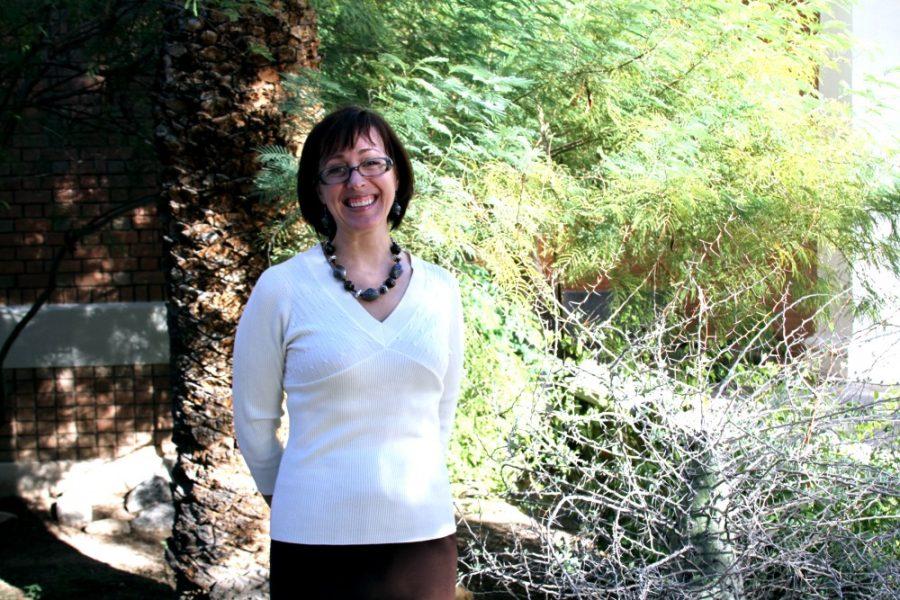If you’ve ever been interested in learning more about trees, the UA Campus Arboretum has got you covered.
The UA Campus Arboretum was established in 2002 and includes all the trees on the UA main campus, an area that spans almost 400 acres. Tanya Quist, an assistant professor in the School of Plant Sciences, is the director of the arboretum. According to Quist, the arboretum has an online database that includes about 8,000 inventoried trees, which equates to about 550 different species of plants.
Quist said this inventory isn’t finished. The arboretum has yet to inventory its shrubs, which would possibly double the amount of plant species in the database.
“We have trees from every continent that has trees,” Quist said. “And I think that’s pretty cool.”
According to Quist, the UA was founded as a land-grant university, meaning that the arboretum has a responsibility to provide research, education and outreach to the university and the community. There are many classes on campus that use the resources of the arboretum to support their learning. These classes range from those from the Center for English as a Second Language to social sciences to life sciences.
The arboretum also works directly with campus operations and landscape professionals to educate on topics of sustainability. Quist said that by doing this, the arboretum and the College of Agriculture and Life Sciences can model sustainable practices that help manage resources and reduce water usage for the rest of the community.
“The idea is we’re training all of these people who will then go out and advocate … so that things that we’ve known for three decades start to trickle down into practice,” Quist said.
According to Quist, having trees in urban settings can have a multitude of benefits including providing shade, protecting water quality and reducing carbon in the atmosphere, which has the potential for reducing climate change.
“Trees capture … carbon and lock it into their wood, and as long as that tree is alive, that carbon’s not in the atmosphere anymore,” Quist said.
Having trees in urban environments have other benefits as well, such as improving human health and psychological well-being, reducing crime rates and increasing productivity, according to Quist.
“I think people just kind of assume that it’s just landscaping or you know, there for decoration,” said Paulina Jenney, a senior studying environmental studies and creative writing. “But the trees on campus really serve a research purpose.”
Through its mission as a land-grant university, the UA also provides research on trees specific to the nature of the state of Arizona.
“We’ve always been trying to respond to needs,” Quist said. “So the faculty’s research in agriculture shifted. They were more interested in looking at trees that could be used in urban settings.”
As the state of Arizona changes, the arboretum hopes to adapt to these changes like Arizona’s plants will.
“All life on Earth is dependent on plant life,” Quist said. “So if we don’t have some kind of continuity in our ecosystems, if we just clear the land and build a city, we’ve disrupted something that’s foundational to our health as a people, as a planet.”
Undergraduate students also play an active role in the arboretum. Jenney is a student representative on the arboretum’s advisory board. According to Jenney, there are groups of students actively planting and propagating trees and participating in research on campus.
One of the arboretum’s student projects was installing the quick response code signs that are posted by every plant on campus, according to Quist. People can scan these quick response codes to learn more about each plant when they walk around campus. Quist said the arboretum is always looking for students to help install signs, plant and irrigate trees and manage the online database.
According to Jenney, the arboretum hosts many events that are open to the public, the most popular of which are the guided tree tours. The tours each have a different theme, some of which include tours about medicinal plants, edible plants and the history of the arboretum.
According to Jenney, the arboretum launched a new series this semester along with the UA Poetry Center called Po-e-Tree, which include tree tours and poetry lessons led by docents from the Poetry Center.
“[It is] sort of collaborating to appreciate the trees on campus, but also how those can be interpreted and reflected upon through art and poetry,” Jenney said.
Follow Emily Hedges on Twitter.









